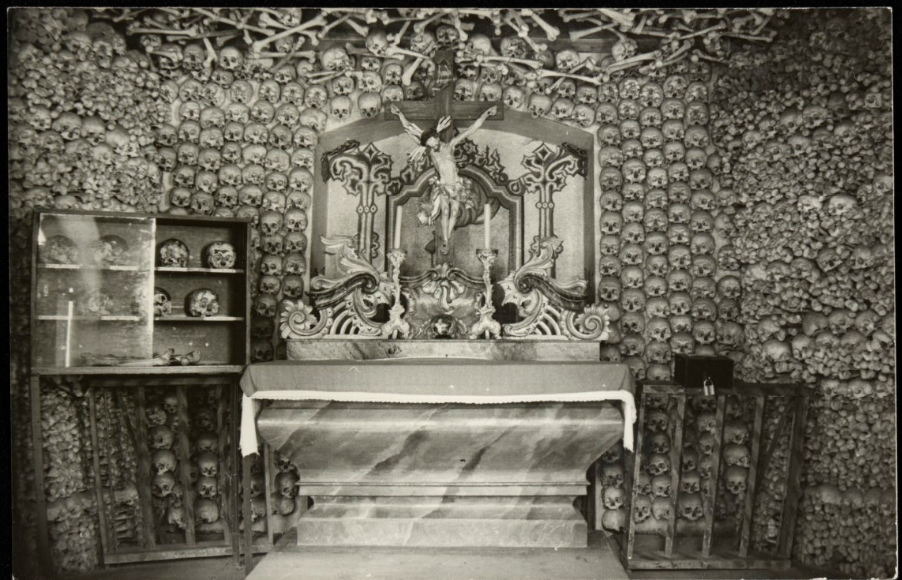Choleric cemeteries – Ossuary chapel, Kudowa-Zdrój
Fact of the Polish figure „Plague image in Culture”
Part of the „Pandemics” topic
Subsequent waves of cholera, which swept through Polish lands in the 19th century, left their mark on both the landscape and culture. Epidemics were commemorated with crosses, and at the same time shrines were erected to ,,scare away” the plague, combining the sphere of organized religion and superstition. Cemeteries were usually located far from settlements, often in forests, and funerals took place quickly, contrary to the tradition, making these objects perceived as dangerous and cursed. To this day, they arouse interest and inevitably became an element of thanatotourism, a form of entertainment, as they can be found scattered throughout the country – the most famous, from 1872, located in Warsaw. The ossuary chapel in Kudowa-Zdrój, built in 1776, is also housing, amongst many others, the bones of cholera victims and is the only monument of this kind in Poland.
Further reading:
Baranowska M., On Crosses, Shrines, and Cholera Cemeteries in the Parishes of Mierzyn and Rozprza, Łódzkie Voivodeship (Poland), ,,Fasciculi Archaeologiae Historicae” (2021), V. 34, p. 69-81.
Tanaś S., Tourism ‘Death Space’ and Thanatourism in Poland, ,,Current Issues of Tourism Research” (2013), V. 3 No 1, p. 22-27.





